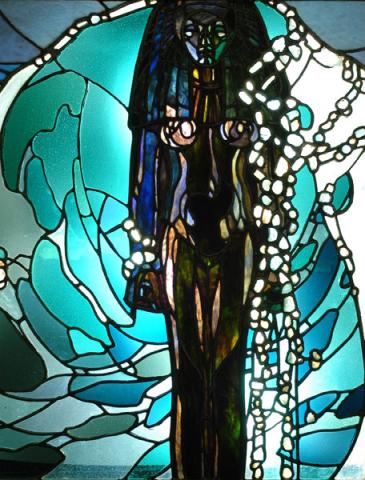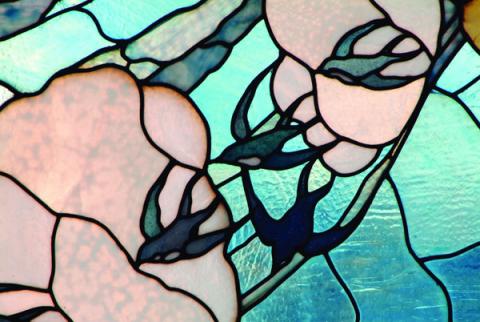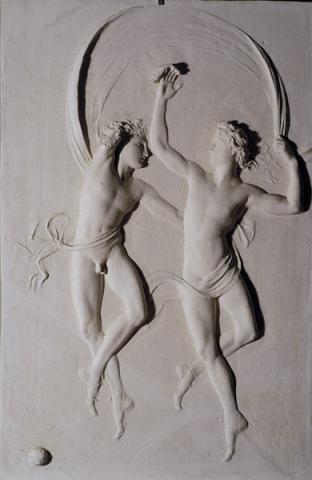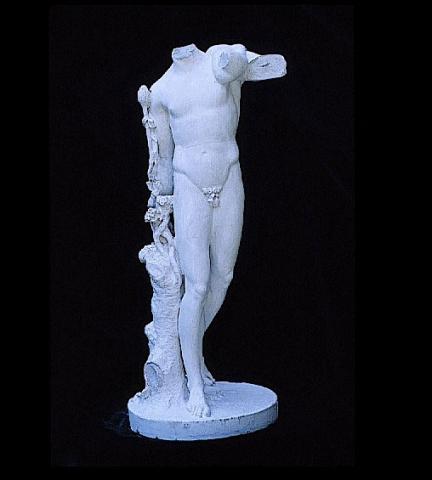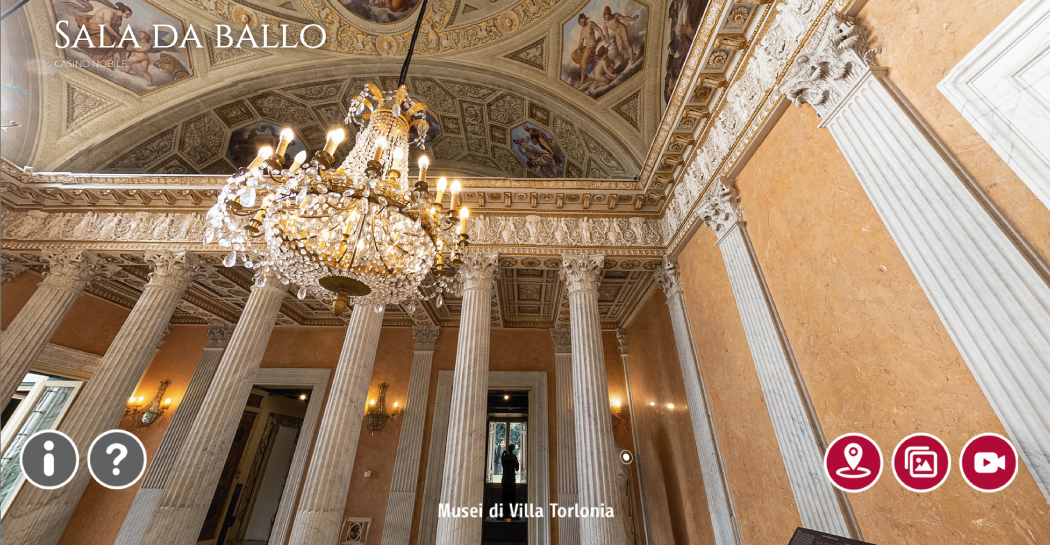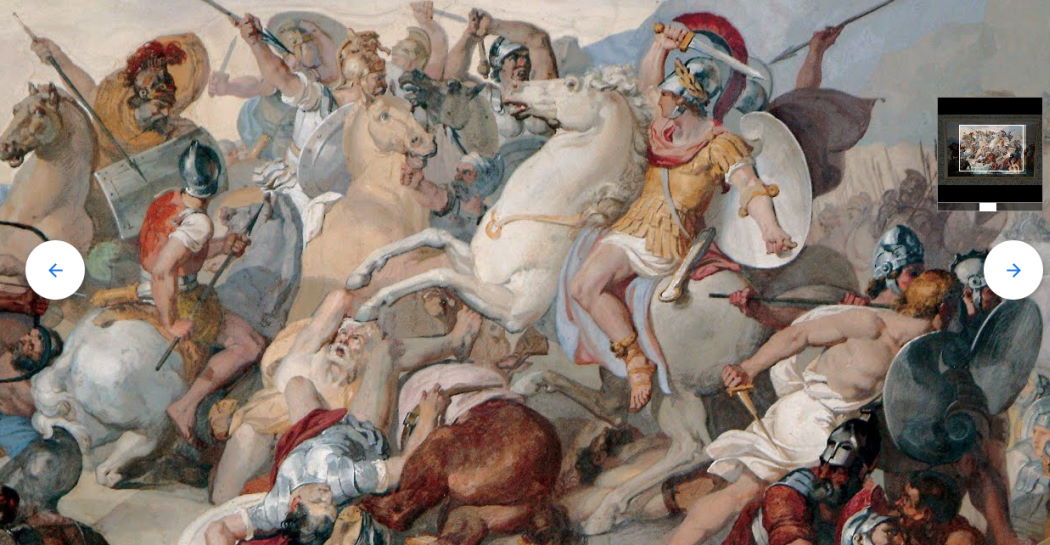Cesare Picchiarini
Born in Rome in 1871, he began work in his father’s workshop in 1885, installing glass in windows. In 1891 he created his first pieces of stained glass; on the death of his father in 1899, he inherited the workshop.
In 1903 he won a competition to provide all the glass for the Synagigue of Rome and, in the same year, he began to teach “the art of making stained glass” in his workshop. In 1904 he began to collaborate with the Workshop of Giulio Cesare Giuliani.
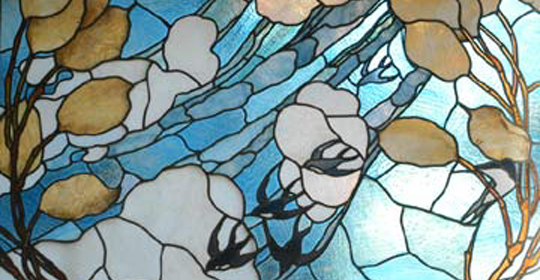
Being, as he himself said, “of poor artistic capacities”, Picchiarini decided, some years later, to learn about ideas of drawing and style.
In about 1910 he began to collaborate with Bottazzi, Cambellotti, Grassi and Paschetto.
Between 1912 and 1913 he created many pieces of stained glass, for both private and public settings, to the cartoons of various artists, including those designed by Paschetto for the Waldesian Church in Rome.
From 1914 to 1920 he created, from the cartoons by Cambellotti and Paschetto, the stained glass for the House of the Owls.
He united technical ability with a role as a promoter of the art of stained glass, which was markedly strengthened by the two exhibitions held in Rome in 1912 and 1921.
In the same period he created other pieces of stained glass, all on religious subjects.
In 1920, in collaboration with Paschetto, a cartoon designer, he created fourteen panes with sacred symbols for the Evangelical Methodist Church on the Via Firene in Rome.
In 1924, he opened the School of Artistic Stained Glass, which he directed until 1928, the year in which he began to suffer problems with his health, which led him, at the end of 1929, to abandon his artistic activities and to hand over the Workshop to Giuliani.
He wroked sporadically in the years that followed, and he died in Rome in 1943.
His memoirs, “Between Glass and Diamonds”, was published in 1935. It is a precious testimony to the history of stained glass in the first decades of the last century, and also a moving portrayal of life and friendship with artists of the calibre of Cambellotti, Bottazzi, Grassi, and Paschetto.


























